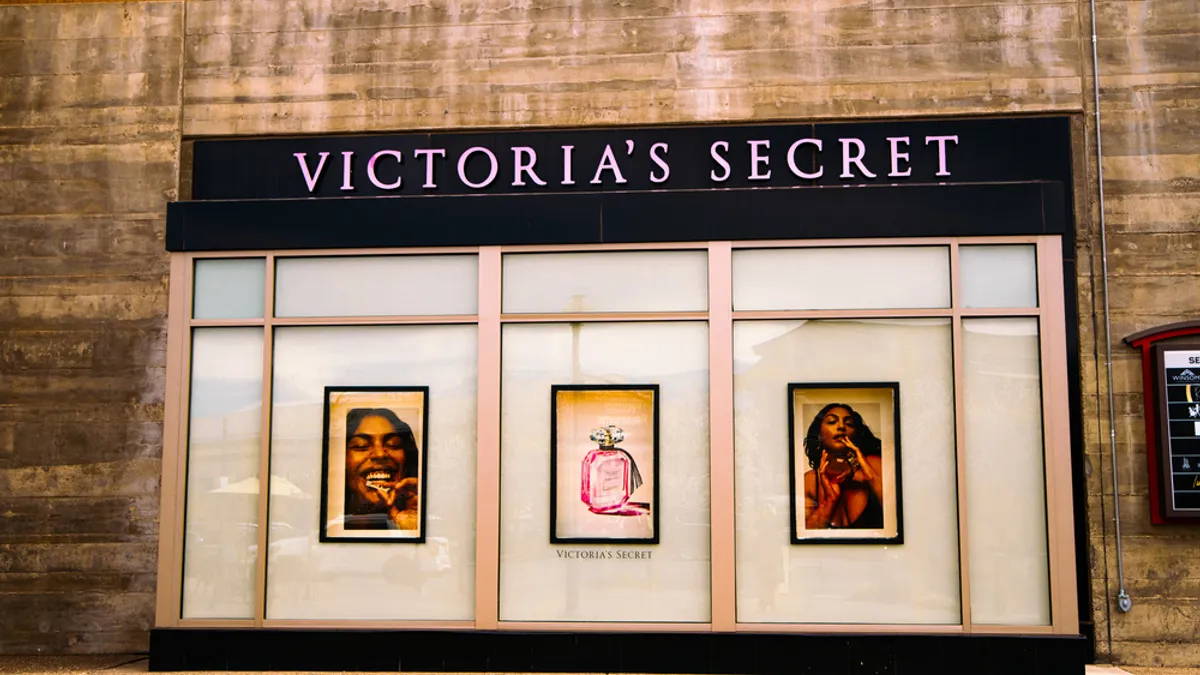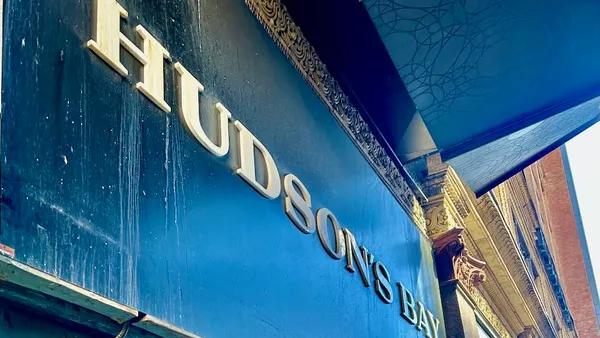Dive Brief:
-
Victoria’s Secret Q3 net sales fell 9% to $1.3 billion, as comps dropped 11% (or 10% in just its physical stores). The result was in line with the retailer’s expectations, and had been foreshadowed during its investor day in October.
-
Inventory rose 21.8% year over year, according to a company presentation. Gross margin contracted by 450 basis points to 34.7%. Net income tumbled 70.4% to $22.2 million.
-
In the current quarter, sales picked up from Black Friday through Cyber Monday, with improved traffic and conversion in stores and online, CEO Martin Waters said on a call with analysts Thursday. The company affirmed its previous guidance for sales and profit.
Dive Insight:
Victoria’s Secret is anticipating a highly promotional holiday period, as the lingerie giant is encountering “a cautious customer in a challenging economic environment,” Waters told analysts.
“Our stores have been some of the busiest in the mall and our promotional levels were appropriately aggressive with increased traffic and conversion both in stores and online,” he said of Black Friday sales. “That being said there are still many very important days ahead in the month of December, where we make the overwhelming majority of our profits for the fourth quarter.”
“I just think we’re in for a tough December across retail,” he also said.
But the company isn’t only struggling with macroeconomic factors. Victoria’s Secret is still working on its own unique challenges, above all executing a pivot away from a once-powerful marketing strategy that increasingly fell out of favor in recent years. The retailer has lost some sales after closing underperforming stores, but it has also given up market share “as a result of brand mismanagement,” according to Wells Fargo analysts led by Ike Boruchow, citing U.S. lingerie market share loss from 26% in 2015 to 20% today.
“The aim is to build on current momentum to take back healthy market share in what is a more crowded competitive landscape compared to 3-4 years ago,” Boruchow said in emailed comments.
In addition to a series of DTC brands that have sprung up in recent years, American Eagle’s Aerie brand and Abercrombie & Fitch’s Gilly Hicks have both expanded and are faring better, GlobalData Managing Director Neil Saunders said in emailed comments.
“In short, Victoria’s Secret remains a sizeable business but the crown of the once undisputed queen of intimates has lost a significant amount of its luster,” he said, adding, “[R]einventing a brand with such a directional, and to be blunt such a negative, image is a hard slog.”
Victoria’s Secret has replaced its “angels” with a collective of powerful influencers, among other marketing tactics, firmed up its executive team, improved its merchandise and partnered with a series of inclusive, digitally savvy brands. Executives say its recent deal to purchase DTC lingerie brand Adore Me will foster new digital capabilities and bring in new customers.
Such initiatives “go well beyond the cosmetic shifts that previous leadership used to pay lip service to and include a genuine desire to become more inclusive and far less reliant on using overt sexuality to sell products,” Saunders said.
Victoria’s Secret may have more work to do in refashioning its store base, however, according to Wells Fargo analysts, who noted that the bulk of its 800-plus store North American footprint operate in malls.
“[W]e're encouraged that the brand will be testing more of an off-mall approach (15 off-mall openings slated for 2022),” Boruchow said. “This is in addition to a focus on in-store experiences, with updates recently done across the majority of the fleet toward the updated brand imagery and away from the dark/boudoir/fashion show heavy imagery of years past.”













